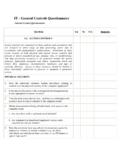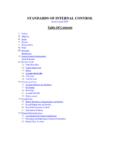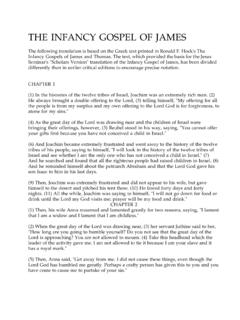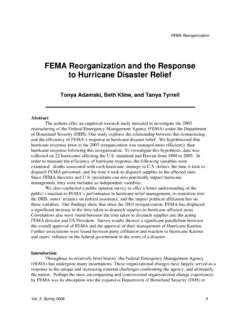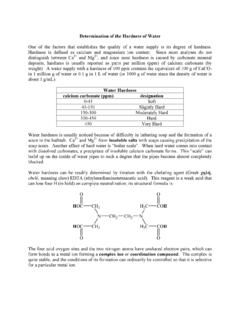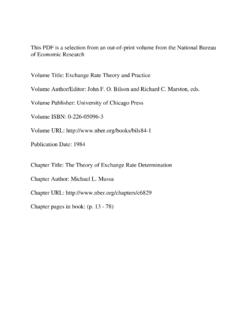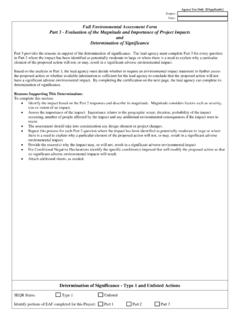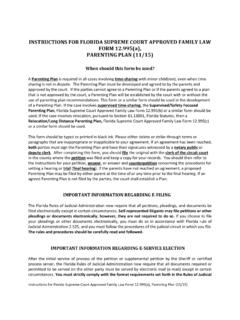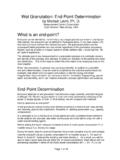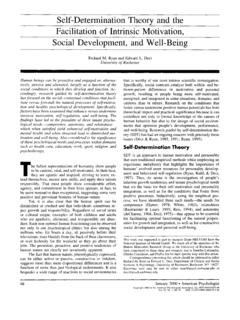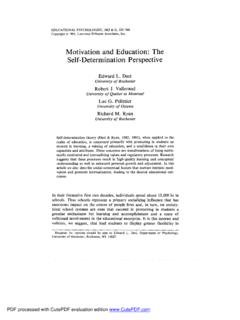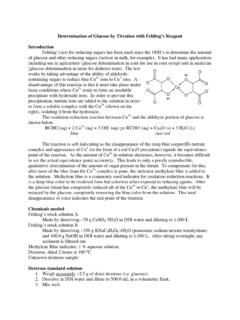Transcription of Price Reasonableness Determination Form
1 Rev: 2/3/2007 Price Reasonableness Determination PC/SC/Contract #: _____ Buyer: _____ Date: _____ BASIS FOR AWARD ( ) Competitive No. of Suppliers solicited: _____ Offers received: _____ Acceptable: _____ Other sources considered: _____ ( ) Sole Source Suggested Source was approved Sole Source or Single Bid see the attached Sole Source Justification Price /COST ANALYSIS ( ) Comparison of proposed prices received in response to the solicitation.
2 Adequate Price competition establishes Price Reasonableness . See attached Price summary. ( ) Comparison of previously proposed prices and previous contract prices with current proposed prices for same or similar items. Both the validity of the comparison and the Reasonableness of the previous Price (s) have been established. Previous PC/SC # s _____ ( ) Use of parametric estimating methods/application of rough yardsticks (such as dollars per pound or per horsepower, or other units) to highlight significant inconsistencies that warrant additional pricing inquiry. Explanation attached. ( ) Comparison with competitive published Price lists, published market prices of commodities, similar indexes, and discount or rebate arrangements. Published Price list is attached or referenced here.
3 The type and date of Price list(s) used: _____ ( ) Comparison of proposed prices with independent cost estimates. See attached estimates. ( ) Comparison of proposed prices with prices obtained through market research for the same or similar items. See attached. ( ) Analysis of attached pricing information provided by the offeror. ( ) This order is priced per the existing contract # _____ that was competitively established by _____ (State, University, WSCA, US Communities, E&I, other) ( ) Other ( , rebate, trade-in) _____ CONTRACTOR RESPONSIBILITY ( ) I certify that the prospective contractor is responsible and that firm has the capability in all respects to perform fully the contract requirement and has the integrity and reliability to assure good faith performance, and that based on the above the Price is considered fair and reasonable.
4 ( ) The required Conflict of Interest Certification, Federal Debarred List Certification, and Anti-Lobbying Certification are attached. Signed: _____ Buyer (Purchasing Jan 31, 2007) Rev: 2/3/2007 METHODS TO DETERMINE Price Reasonableness 1. INTRODUCTION: University professional buyers are the primary agents who make decisions on behalf of the University for the purchase of goods and services needed by our faculty and staff. When spending other than federal government money, buyers have the ability to use their professional knowledge of the marketplace, commodities, services, users, and potential suppliers to determine that the Price is fair and reasonable. When spending other than federal government money, buyers indicate this Determination by signing a purchase order for transactions under $25,000, and by completing the Informal Quote Summary Sheet for transactions of $25,000 to $49, Price Reasonableness for transactions of $50,000 or more not using federal government money is normally determined through a competitive solicitation.
5 The rules are different for federal government funded transactions. Federal government funded transactions of $10,000 to $100,000 require written documentation of source selection and Price Reasonableness . Federal government funded transactions of more than $100,000 require more intensive Price or cost analyses than is detailed here. Please seek assistance from the Associate Director or Executive Director of Purchasing for these transactions. 2. WHY Price OR COST ANALYSIS: The basic reason that the federal government requires that Price or cost analyses be performed and documented is that it is a sound business practice. This process ensures that funds are expended in the most cost effective manner to conserve limited resources. A Price that is excessive or unreasonable fails completely to accomplish this important goal; a Price which is determined to be fair and reasonable is the fulfillment of this important objective.
6 3. WHAT IS Price ANALYSIS: In simple terms, a Price analysis is a review of the Price proposed by a supplier and an assessment as to whether or not it is fair and reasonable. A Determination that a Price is fair and reasonable is really a conclusion that the proposed Price is fair to both parties, considering the quality needed, delivery requirements, and other factors. The basis for reaching the conclusion is found in the facts and information considered and analyzed by the buyer. 4. WHAT IS COST ANALYSIS: A cost analysis is different from a Price analysis. The major difference is that a Price analysis looks at the whole Price . It does not involve an examination of the individual cost elements or components that collectively comprise the seller s total Price .
7 A cost analysis actually examines the individual cost elements that comprise the total proposed Price . Depending on the purchase, the elements may vary but generally include such things as labor rates, material costs, overhead or indirect rates, a cost of money factor, general and administrative expenses, and a profit or fee. 5. MEANS COMMONLY USED IN Price ANALYSIS: In performing a Price analysis, that is, determining a Price to be fair and reasonable without examining the individual components of the Price , a buyer has a wide selection of methods. Which method is used and its suitability depends on the facts or information of the individual Price . What follows is a listing of the most common methods or criteria used to determine a Price fair and reasonable by Price analysis.
8 A. Price COMPETITION: When two or more acceptable offers are received and the lowest Price is selected, the Price of the lowest offerer can be concluded to be fair and reasonable. It is generally accepted that where the difference in prices between the two offers is less than 15%, then Price competition exists. A Price that is very low must be checked to assure that the seller understands what is being asked for and has made no errors. Example: Seller A proposes a Price of $22,592; Seller B proposes a Price of $25,550. and Seller C proposes a Price of $1,400. Seller C is low but the difference is too great. This must be checked to see if Seller C is proposing the same item(s) and has made no errors in the proposed pricing. If a selection is made to other than the low, acceptable offer, the Price must be determined to be fair and reasonable by other means.
9 B. CATALOG OR ESTABLISHED Price LIST: Where only one offer is received and the seller has a published or established Price list or catalog which sets forth the Price of a commercial item, this fact can be used to find the Price fair and reasonable. The catalog should be current (within one year, generally). It is a good idea to obtain a name of another recent purchaser and confirm that this was the Price paid. Often, discounts off of the prices list are offered. If this is the case, it should be noted in the Rev: 2/3/2007 written analysis. The item to be purchased should generally be a commercially produced one sold to the general public in substantial quantities. c. CONTRACTS OR PRICING AGREEMENTS: The Federal Government often enters into contracts with various companies to establish the prices of items that will be sold to the Government.
10 These are presumed to be fair and reasonable. If a Seller cites a GSA contract Price , that is adequate rationale to determine the Price fair and reasonable. The actual Price may be lower than the GSA due to discounts. If this is the case, it should be noted in the written analysis. d. Price BASED ON PRIOR COMPETITION: It may be that only one Seller will make an offer. If this is the case and the item was previously purchased based on competition, this may be acceptable. In such cases, cite the Price of prior purchase and note if it was competitive or based on catalog Price or other. An increase in Price , with no current catalog or competition, should be about the current rate of inflation. e. COMPARISON TO A SUBSTANTIALY SIMILAR ITEM: Often an item is very similar to a commercial one but has added features that are required.

